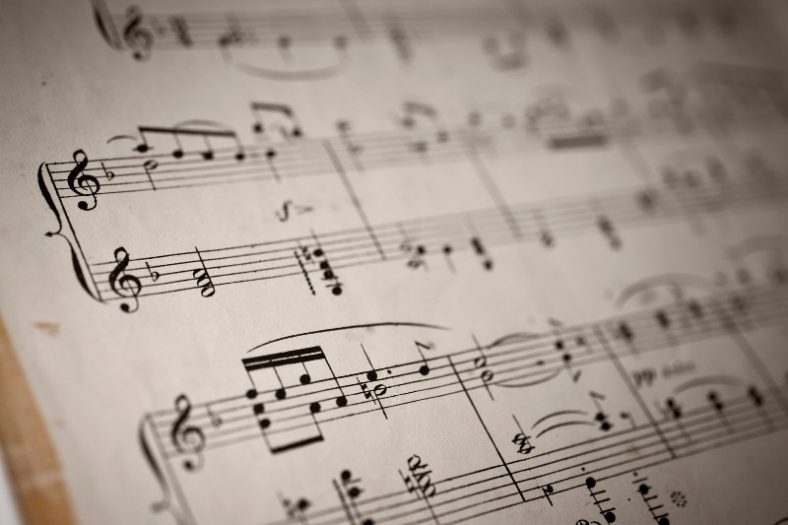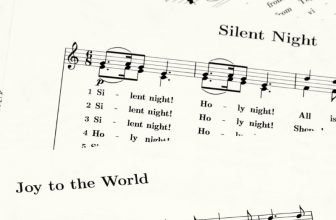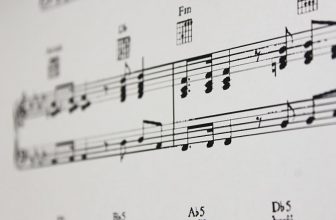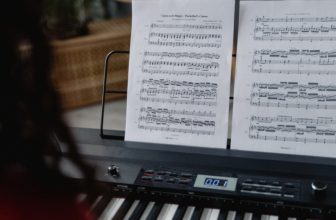How Many Musical Notes Are There?

There are 12 different musical notes in western music. Although musical instruments such as the piano have more than 12 keys, these only represent 12 unique pitches. The vast majority of pop-rock music is based on these 12 fundamental pitches; however, it’s possible to play many other musical notes.
The 12 musical notes in western music are C, C#, D, D#, E, F, F#, G, G#, A, A#, and B. In an instrument like an 88-key piano, these 12 unique pitches are repeated seven times, going from low to high. The lowest C sounds very different from the highest C, but the musical note both keys represent is the same.
Pretty much all songs you know and love rely solely on these 12 musical notes. But that doesn’t mean all music is made with just 12 notes. In Hindustani Classical Music, for example, non-western musical notes such as the C half-sharp (a note in-between C and C#) are extremely prevalent.
Gamelan music from Indonesia, on the other hand, relies on scales that use musical notes different from the 12 notes of western music. Music that uses notes outside the traditional 12-note system is known as microtonal music.
So, how many musical notes do exist? Well, the short answer is 12. But, there’s a virtually infinite number of other possible notes. To understand how and why most music is still based on just 12 unique pitches, you must first learn how pitch works.
Contents
How does pitch work?
The best way to understand how pitch works is to think of the strings of a guitar. The guitar fret wires represent specific musical notes (as in a piano) but guitarists can play an endless number of other notes. Pitch is a spectrum, and musical notes are nothing but points in the spectrum that were highlighted for practical reasons.
Musical notes are defined by their frequency, which is the number of times their wave vibrates per second (measured in hertz). In western music, the note A (for example) vibrates at 440Hz. Does this mean that an A must vibrate at precisely 440Hz to be an A? Not at all. You can play a song in the key of A just as effectively using alternative tuning systems. Some believe that music tuned to 432Hz sounds better than music tuned to 440Hz, even though both feature the same 12 musical notes (though many of the reasons are somewhat questionable, as you can read in this article).
This is possible because what makes music is not the musical notes that are being played. Instead, it’s the relationship between them, known as a musical interval. A C followed by a G is a perfect 5th just like an A followed by an E is a perfect 5th. Even though the notes are different, a C-to-G progression sounds almost exactly the same as an A-to-E progression.
This happens because music is relative. While “Happy Birthday” played in the key of C sounds different from “Happy Birthday” played in the key of A, the difference between the two versions is so slight and unnoticeable that’s practically irrelevant. Fundamentally, all versions of “Happy Birthday” are the same regardless of the key because they have the same succession of intervals.
So, if one can divide the pitch spectrum by a virtually infinite number of musical notes, why are there only 12 in western music? The simple answer is: because of the musical intervals. But there’s a lot more to it.
Why are there 12 musical notes in western music?
The 12 musical notes used in western music were created arbitrarily to privilege musical intervals. The whole point of these 12 notes is to ensure musical intervals played in an instrument can be as consonant as possible. Consonant notes are notes with a harmonious relationship between frequencies.
Understanding where consonance comes from would require a severe examination of human psychology. But even though consonance can be interpreted as random, it’s so evident that it would be silly to try to justify it. In other words, pretty much everyone agrees that musical intervals such as the octave, the perfect 5th, and the perfect 4th are highly harmonious.
Most music is built around these consonant intervals, so why not try to adapt musical instruments to be as equipped to play them as possible? That’s where tuning, the outlining of the specific musical notes in an instrument, comes in.
The importance of tuning systems
The most accurate tuning system is known as just intonation. It defines specific musical notes in the pitch spectrum based on the mathematical relationship that frequencies need to have to create harmonious musical intervals. I know that’s a mouthful, but it’s simpler than it sounds.
To find an octave (the most harmonious of musical intervals) one needs to take the frequencies of a musical note and multiply them by two. That’s why you can play the octave of a 440Hz-A by pressing the next A on the keyboard, which has a frequency of 880Hz. Other consonant musical intervals boast equally simple mathematical ratios. A perfect 5th, for example, results from a 1.5 multiplication.
In just intonation, every interval is tuned to perfection. This creates some issues, as it can be hard to play multiple keys in an instrument tuned to just intonation.
For that reason, just intonation has since been replaced by another tuning system, known as equal temperament. Equal temperament compromises the exact figures of just intonation to make it possible for musicians to use their instruments in a more versatile way. All adulterations of just intonation are known as temperaments, but equal temperament is without a doubt the most popular – after all, it’s used in almost all music.
How does equal temperament work?
Instead of calculating the frequency of each musical note based on its interval, equal temperament only determines the frequency of the octave. It uses a 2:1 ratio to find the A that comes after the lowest A (and so forth) and divides the notes in-between octaves equally. That’s why it’s called equal temperament.
This simple but effective method isn’t mathematically perfect, but the slight “un-perfectness” of some musical intervals is a small price to pay to have a more versatile way of playing a musical instrument. This begs the question: if you can divide an octave equally by any number of notes, why 12? Why not 24?
In this case, convenience is the answer. Access to 12 notes is enough for musicians to have the freedom to explore multiple keys, play different music scales, add chromatic tension to their compositions, and be creative!
In addition, 12 doesn’t go over the top. It’s relatively easy to learn music with 12 notes and the human body is suited to play instruments that feature 12 unique pitches. Can you imagine how large a grand piano would have to be to include seven octaves with 24 notes each? In combination with equal temperament, 12 is in the sweet spot. It’s no coincidence that musicians seldom challenge this convention, even though they can get very interesting results when they do.
So, what happens when musicians play outside of equal temperament?
What is microtonal music?
Microtonal music is music that uses intervals smaller than the semitone, which is the interval that separates a musical note from the two closest notes in 12-note western music. In other words, microtonal musicians compose by using pitches that sit in-between the 12 standard musical notes.
Microtonality is rare in pop music, but it’s sometimes used discreetly by major artists. Nancy Sinatra’s “These Boots Are Made For Walking” and Paul Simon’s “Insomniac’s Lullaby” are two well-known songs that employ microtones. However, they explore microtonality in combination with equal temperament.
Hindustani classical music and Gamelan music make for two more evident examples of microtonal music. The first relies heavily on notes that cannot be played on a western piano, such as half-sharps. The latter uses a non-western tuning system that divides the whole pitch spectrum into seven or even five notes.
Ignored for a long time outside the realm of modern classical and experimental music, microtonality is perhaps more popular than ever now, much due to the work of musicians such as Jacob Collier and Sevish. Sevish is particularly prominent, working both as an educator and microtonal electronic musician.
Microtonality is also extensively used in modern genres of music such as vaporware and lo-fi hip hop. Both genres feature tape effects that alter the frequencies of pitches to the point they no longer sound like standard western-music notes. The YouTuber Adam Neely has a great video on how to compose lo-fi hip hop using microtonal techniques:
Experimenting with microtonal music is hard, especially if you’re already accustomed to playing and composing in equal temperament. However, it’s easier than ever to create microtonal music, especially if you have access to technologies such as MIDI and DAWs.
How do you make microtonal music?
There are two ways of making microtonal music. You can manually change the tuning of your instrument or create .tun files that can be uploaded into virtual instruments. The latter is much more precise, as it allows you to generate precise tuning systems within seconds.
U-He is at the forefront of electronic-music microtonality, as most of its virtual synths (including Diva and Bazille) are compatible with .tun files. They even have a Tuning Table Generator. The virtual piano Pianoteq is also excellent for composing microtonal music, as it features several ready-to-use tuning presets.
The easiest way to play with microtonal music is to use xenharmonic scales, which are scales that don’t fit the traditional 12-note equal temperament system. With a Tuning Table Generator, you can easily divide the pitch spectrum by more or less than 12 notes, giving way to new and interesting musical intervals.
If you’re new to microtonal music, I would advise you to divide the octave by either 5, 7, or 24 notes. Xenharmonic systems with 5 and 7 notes are easy to play because they function a lot like a traditional scale, meaning most notes combine harmoniously with one another. Systems with 24 notes (or any number divisible by 12) are even more familiar, as they’re simply an extension of the 12-note equal-temperament system.
Conclusion
Who could’ve thought that there’s so much to say about the number of musical notes used in western music? With nothing but 12 unique pitches, great artists have come up with works of art that inspired generations, drove social change, and made us laugh, cry, and dance.
You don’t need more than 12 musical notes to make history in the music world. However, it’s always interesting to explore pitch a bit further and learn about the seemingly infinite possibilities of microtonality and alternative tuning systems.





